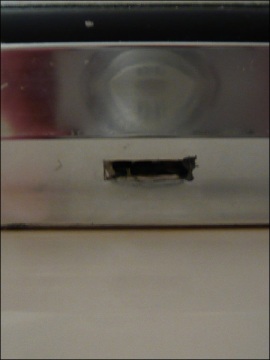Weep Holes Allow Water to Drain Out of the Shower Frame and Into the Shower.
Hello!
I saw you through Google and hoped you may be able to answer my question. I am re-caulking my shower enclosure and I noticed that there are some slots along the bottom of the inside of my shower enclosure. Before removing the caulk, these slots were harboring mildew and mold and spewing it out in gobs. the caulk ran right under these slots and it too became black and ruined. My question is whether these should be caulked over or not. Since water seems to be getting in there and it never dries out, I assume that it is getting in there primarily from the front. But, if there is some other reason why these need to be open, such as draining water that gets in there from elsewhere, then obviously I wouldn’t want to caulk over them. What do you think? Thanks!
Daniel Wells
Hi Daniel,
Yes, those are what we call “weep holes.” They are necessary, as you guessed, to allow the water to drain out of the frame and into the shower. I would suggest spraying a bleach solution into the holes from time-to-time to try to inhibit the mold growth in the framework. If the base of the shower itself (shower pan or tile curb) doesn’t slope into the shower properly, the water will never completely drain out of the aluminum channel at the bottom. There will always be some standing water in there, and that is going to create mold.
There are a few ways to get the water out manually. One is to use a shop-vac or some other vacuum that is approved for wet situations. You could also use a blow drier to force the water out of one hole by directing the flow of hot air into another hole. One other low-tech method of drawing water out is by using a cotton wick. This is simply a piece of string (yarn?) that draws the water out of the channel… you simply work one end of the string into the weep hole, and let the other end hang down into the shower pan. The capillary action of the water being absorbed will actually siphon the water out of the channel and down the drain.
Best wishes,
-Chris


Thanks! I’m in the exact same situation and had the same question.
How can the water drain if the bottom of the weep holes are higher than the top of the frame??????
Stan, You have to remember that there is some thickness to the bottom part of the metal. So the bottom inside the channel is actually higher than the bottom of the outside of the channel. Does that make sense?
This Stan, thanks for the weep holes answer. Next is—the contractor siliconed the inside of the frame and not the outside–I wanted to see if water would leak out–and it sure did. They want to silicone the outside–even if the water is leaking–is this correct????I told them that if after sealing the inside and no leaks—than you can seal the outside. Am I right of wrong. Thanks–
I think it’s OK to let them caulk the outside as long as they are sure there is no water trapped inside of the enclosure. They need to dry it out completely.
What is the purpose for weep holes??????Why would you want water to go in the weep holes. I am not a shower guy I am a Machinist—is it for expansion?????
Thank you so much for this explanation. It answered our questions about leaky shower issue we were experiencing:))
I removed the silicone from the along the metal channel that’s on the inside; then i siiconed it but then noticed water on the outside part of the shower where there wasn’t before the repair. How could this have happened? I am guessing the siiconing i did sealed off better than before thereby causing a dam. Slowly the puddle backed out underneath the channel to the outside, No silicone is on the outside part of channel(shower enclosure).
I think you may be right. You may need to add silicone to the outside as well.